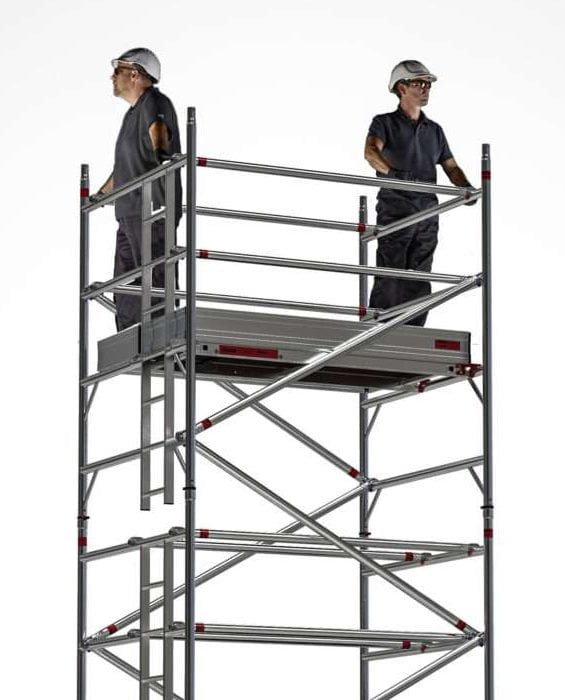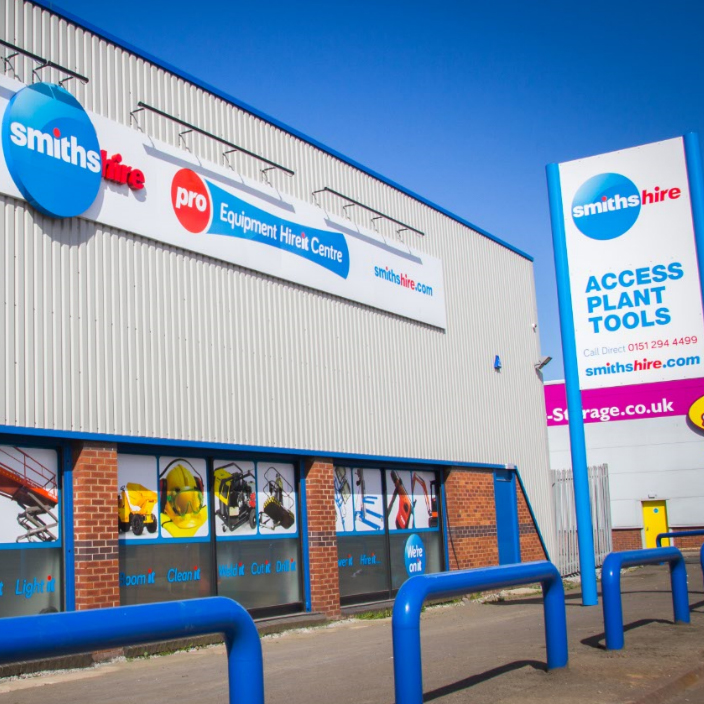Scaffolding systems are nigh-on essential for large-scale or long-term construction projects, providing a safe and stable platform for staff to work on as they go about their tasks. Semi-permanent structures are generally reserved for the biggest construction projects likely to take months or even years. For anything more short-term, the standard practice is to use scaffolding towers instead.
Next to ladders, scaffold towers are some of the most widely-used types of access equipment in the UK, and indeed the world – and if you want to hire a scaffold tower, you’re in exactly the right place. With more than 50 years of experience behind us here at Smiths Hire, we provide a range of industry-leading scaffold towers ourselves, all designed to provide reliability and versatility in a wide range of settings and environments.
The majority of our scaffold towers are 3T scaffold towers – this stands for Through The Trapdoor, and refers to their method of assembly, officially approved by the HSE. With 3T scaffold towers, the assembler can sit on the platform trapdoor to add or remove the guard rails on the platform above them. This saves them from the risk of standing on an unprotected platform, minimising the risk of any potential falls from height.
Safety has naturally been a central principle underpinning the design of each of our scaffold towers, although obviously training and good practice plays a major part in keeping your team safe too. So with that in mind, this week we’re looking at five of the most important safety tips for working on scaffolding.
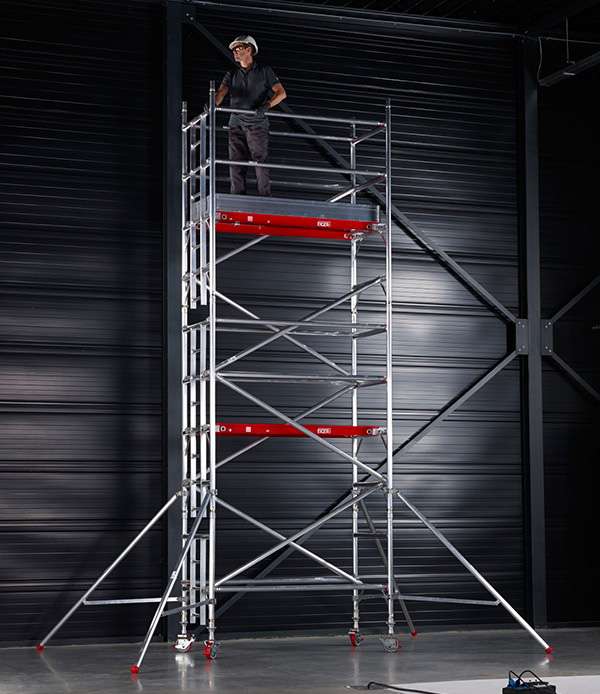
Make sure everyone is up to speed on relevant weight limits
One of the most crucial prerequisites to using any piece of equipment is to first make sure that it’s properly suited for the task at hand, and that’s no different when it comes to scaffold towers. And of course, weight limits are amongst the most fundamental criteria for judging the suitability of a scaffold tower for the task at hand.
Every scaffold tower will have an upper limit on its Safe Working Load (SWL). If that total SWL is exceeded, it could have serious consequences for the safety and structural integrity of the tower – in the worst case scenario, it could even collapse.
So, before anyone so much as steps foot on any scaffolding, everyone will need to know exactly what its SWL limit is, and be mindful of all the elements which could potentially contribute to that weight limit – including the number of personnel working on it, the amount or type of the tools being carried around, or the materials being collected and brought down.
In general, it’s wise to stay as far below the SWL as possible, so if you’re looking to hire a scaffold tower and you’re not quite sure exactly which one you’ll need, we’re always happy to advise here at Smiths Hire.
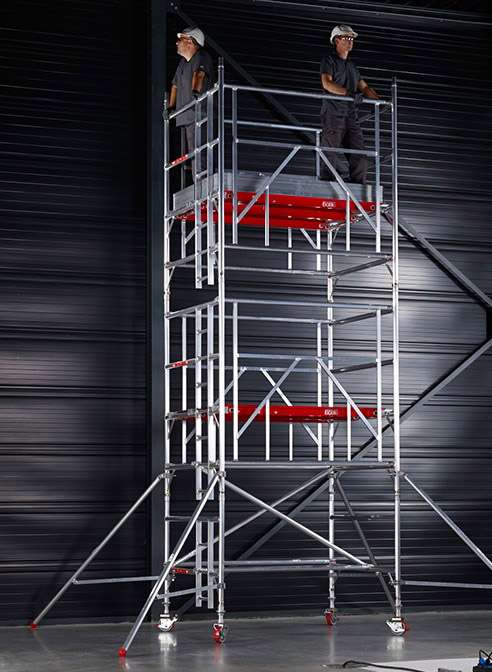
Take care to use the proper PPE
Once again, this is a universal priority for any type of job or setting, and one that’s just as important when working on scaffolding towers. Using the right PPE helps to ensure that staff are capable of moving around and conducting their work safely and comfortably, in a way that minimises risk to themselves, their colleagues, and anyone in the immediate area.
Depending on the nature of the task at hand, you may need to exercise professional judgement about any additional or job-specific PPE you may need.
At the bare minimum though, you and your team will probably need the following PPE for working on scaffolding:
- Harness – A harness is one of the most obvious pieces of useful PPE, and its safety value can’t be overstated at particularly high elevations. There’s no strict legal definition of when a harness needs to be used, so you or your team may need to trust your instincts (don’t forget, a fall from even just six feet or more can potentially cause a fatality).
- Footwear – Non-slip, steel-toed boots are generally the preferred option for moving around on scaffolding. They can protect the wearer from sharp or heavy objects, as well as risky slips or falls.
- Gloves – Just like footwear, sturdy gloves can provide valuable protection against sharp objects. Crucially though, they also keep your hands warm and dexterous, helping your grip to remain strong, and reducing the risk of any dangerous fumbles with objects at height.
- Hard hats and hi-vis jacket – There’s a reason hard hats are almost universally mandatory on worksites; they prevent their wearers from potentially deadly head injuries. Similarly, a high-visibility jacket is a nigh-on essential garment in any industrial setting, and particularly vital when working at height, or in low-light conditions.
- Warm and dry clothing – Wearing clothing that’s comfortable and suited for the job generally plays a major part in keeping up morale. Crucially though, it can prevent workers from being exposed to the risks associated with excessively hot or cold conditions, like light-headedness, loss of fine motor control, or even loss of consciousness.
- Eye protection / ear defenders – Vision and hearing are both relatively sensitive, and notoriously vulnerable on worksites. For that reason alone, it’s often worth equipping your staff with eye protection and ear defenders if you think there’s even a slight risk they may be vulnerable to environmental factors. Not least because something that a worker sees (or hears) just in time may well end up saving their life.
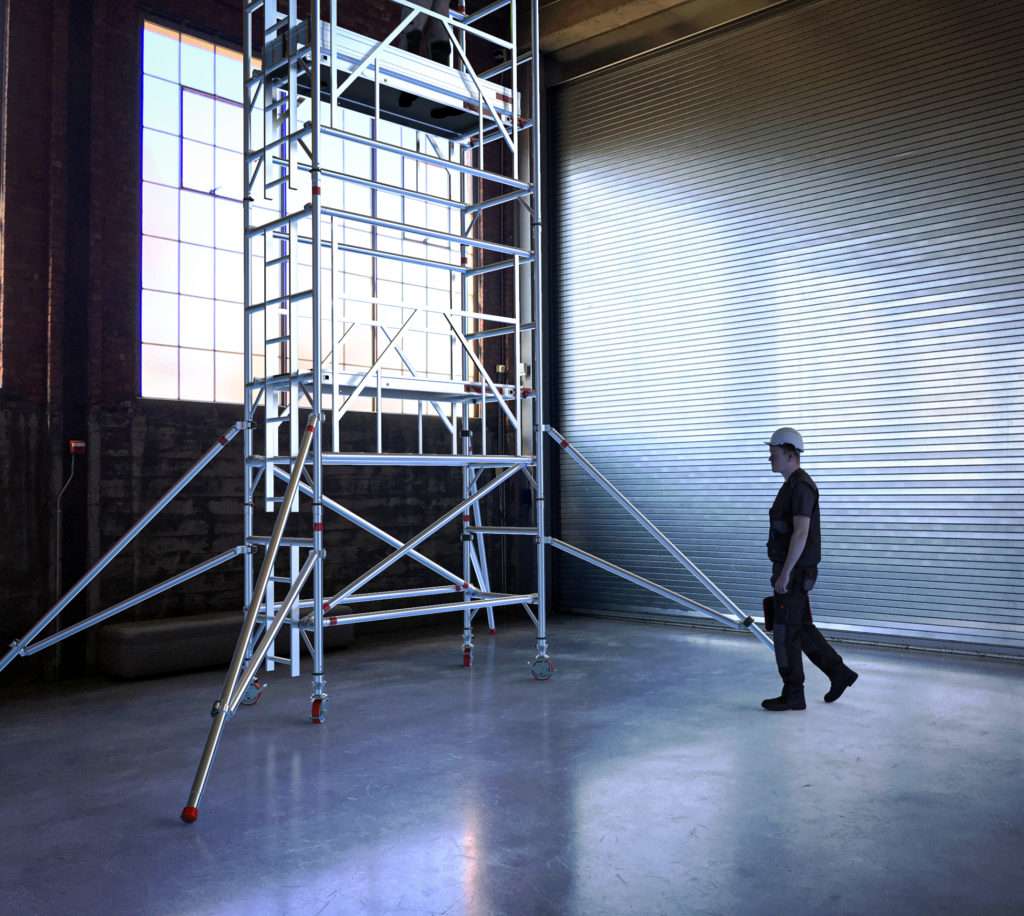
Watch out for falling objects
Ensuring the safety of anyone working on the scaffolding is just one priority for site managers – the job also involves ensuring the safety of anyone on the ground in the surrounding area too. We’ve already touched on the importance of hard hats in the section above, and protection from falling objects is a major reason why.
However, while the risk of falling objects is a particularly dangerous possibility, it’s almost always an entirely preventable one. One of the best ways to avoid it is to make sure that the scaffolding area is as clutter-free as it can reasonably be. It’s worth taking particular care not to leave tools or materials close to any ledges, where they could be easily knocked down onto unsuspecting persons below.
On that note, it’s a good idea to ensure that there’s a decent amount of clear space around the bottom of the tower if possible, so that you can keep your staff clear of any potential injuries. If you’re working in a public area, it’s not a bad idea to extend your cordon out even more widely – let’s be honest, some members of the public have an unfortunate tendency to wander into areas they’re not supposed to!
Keep an eye on the skies
Weather can be a major complicating factor in the ability to use scaffold towers safely. Strong winds and rain are two of the biggest threats, for obvious reasons. For starters, rain can make the surface a lot more slippery, so it can be easy to lose your footing, and potentially easier for tools and materials to slip off it. Hail can make it similarly difficult (and a lot more unpleasant) to continue safely working at height.
Strong winds on the other hand can threaten the entire stability of the structure itself, so once again, it’s important to trust your instincts and professional judgement in these circumstances as to whether it’s safe to continue using it. Always err on the side of caution – if you think it’s probably unsafe, then there’s a good chance that it is. If so, then the work will need to be delayed, whatever the hassle or expense it may cause. It’s never worth risking human life.
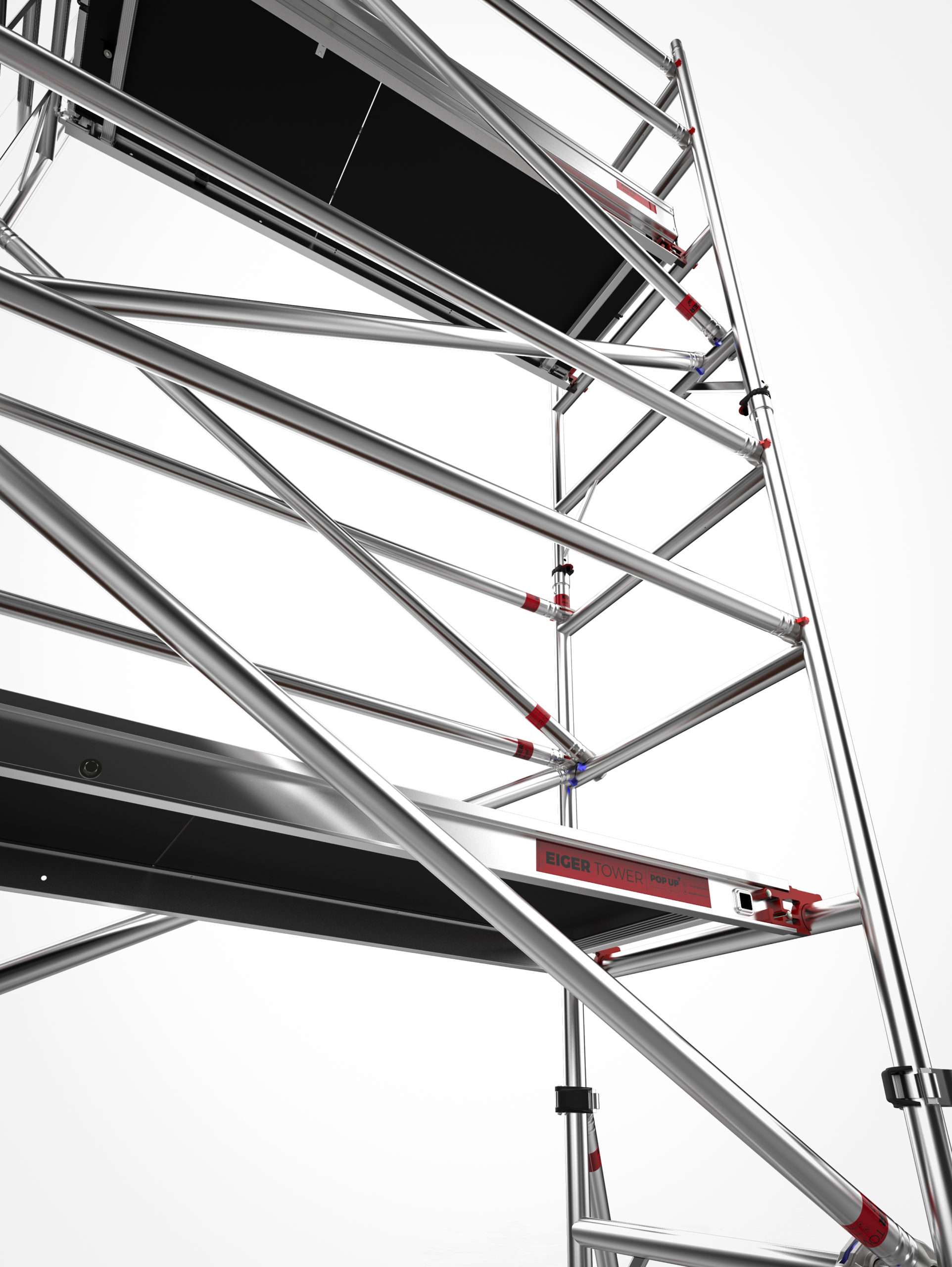
Carry out a pre-use inspection
As soon as you’re satisfied that you’ve got the right scaffold tower for the job, and that everyone is properly trained and equipped to use it, then it will finally need to be subject to a detailed inspection before it’s put to use. This step is vital, even if you’re on a tight deadline.
For example, you’ll need to make sure that the ground for the scaffolding tower is level and clear of debris, and that the work area is cleared (as far as it can be) of hazards. The scaffold tower also needs to be positioned as far away as reasonably practicable from permanent hazards like power lines.
As part of this process, the inspection must also establish that there’s a method of safe access onto the work platforms, preferably from a staircase or ladder tower.
Other recommendations include:
- Checking that leg braces are installed
- Checking that plans and boards are both level and secure
- Removing any tools, materials or equipment not in use
These are just a few of the key points, but the above is not an exhaustive list! It’s always worth double-checking the full HSE page on scaffolding information.
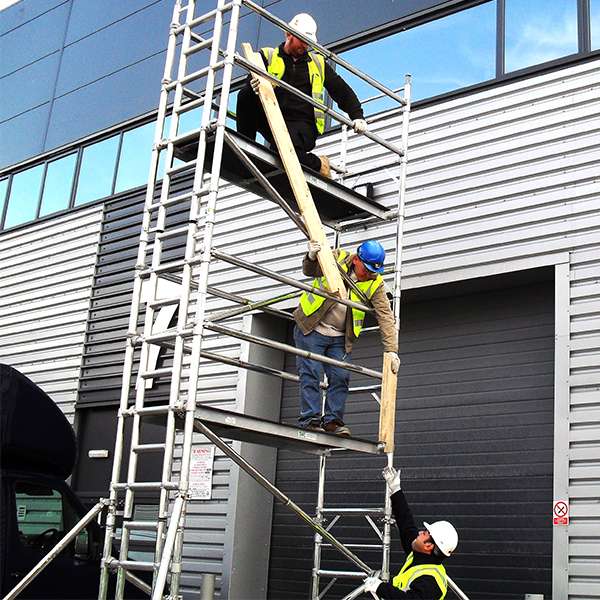
Alternatively, if you’re ready to start enjoying the best prices on scaffold tower hire, you’re in exactly the right place. At Smiths Hire, we’ve been providing quality equipment and tool hire services to the DIY and trade sectors for more than half a century – operating from 16 tool hire depots across the North West and Yorkshire, including several major cities like Manchester, Liverpool and Leeds.
If you need have any questions about our scaffold tower hire services, or you’d like any help or advice, don’t hesitate to give our team a call on 0333 034 2019! We’re here to help!

 0333 323 2100
0333 323 2100

